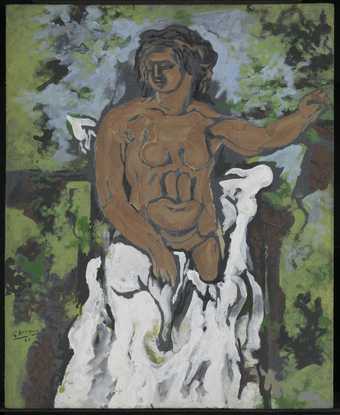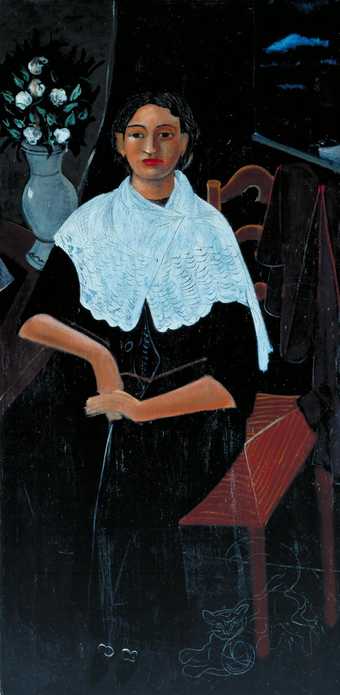
Pablo Picasso
Seated Woman in a Chemise
(1923)
Tate

Georges Braque
Bather
(1925)
Tate

André Derain
Madame Derain in a White Shawl
(c.1919–20)
Tate
The First World War administered a huge shock to European society. One of the artistic responses to it was to reject the extreme avant-garde forms of art that had proliferated before the war and instead adopt more reassuring traditional approaches. The term ‘return to order’ (from the French ‘retour à l’ordre’) is used to describe this phenomenon, and is said to derive from the book of essays by the artist and poet Jean Cocteau, Le rappel a l’ordre, published in 1926.
Many of the artists who had previously been innovators of avant-garde styles turned their back on their previous ideas and approaches. Georges Braque and Pablo Picasso the inventors of cubism, with its fragmentation of reality, abandoned it for more traditional styles. Classicism was an important thread in the return to order, and in the early 1920s Picasso entered a neoclassical phase. Braque painted calm still life and figure pictures which, while still having some cubist characteristics, were simple and readable. The former Fauve painter André Derain and many other artists turned to various forms of realism. Futurism, with its worship of the machine and its enthusiasm for war, was particularly discredited. In Germany the Neue Sachlichkeit (or ‘new objectivity’) can also be seen as part of the return to order.
